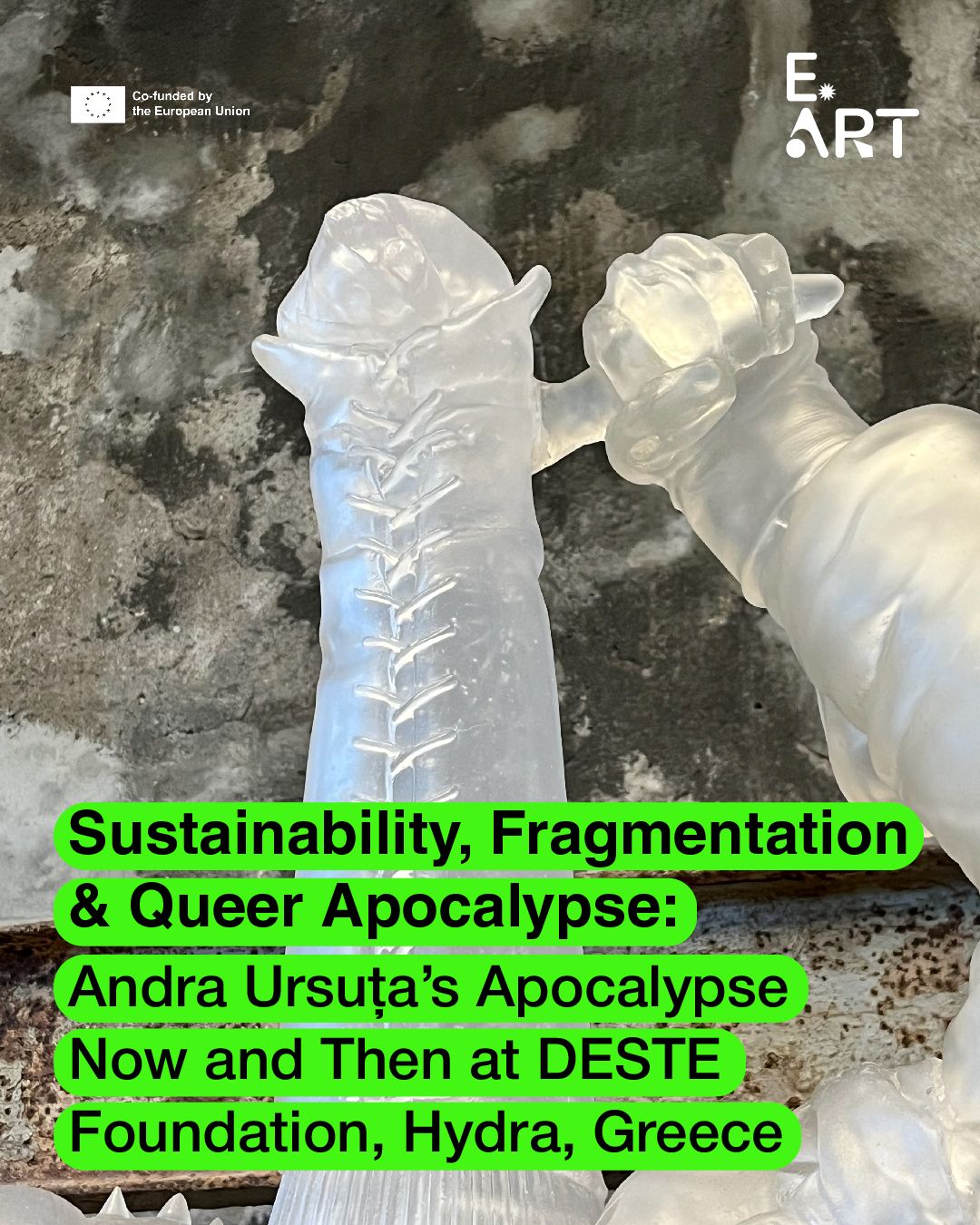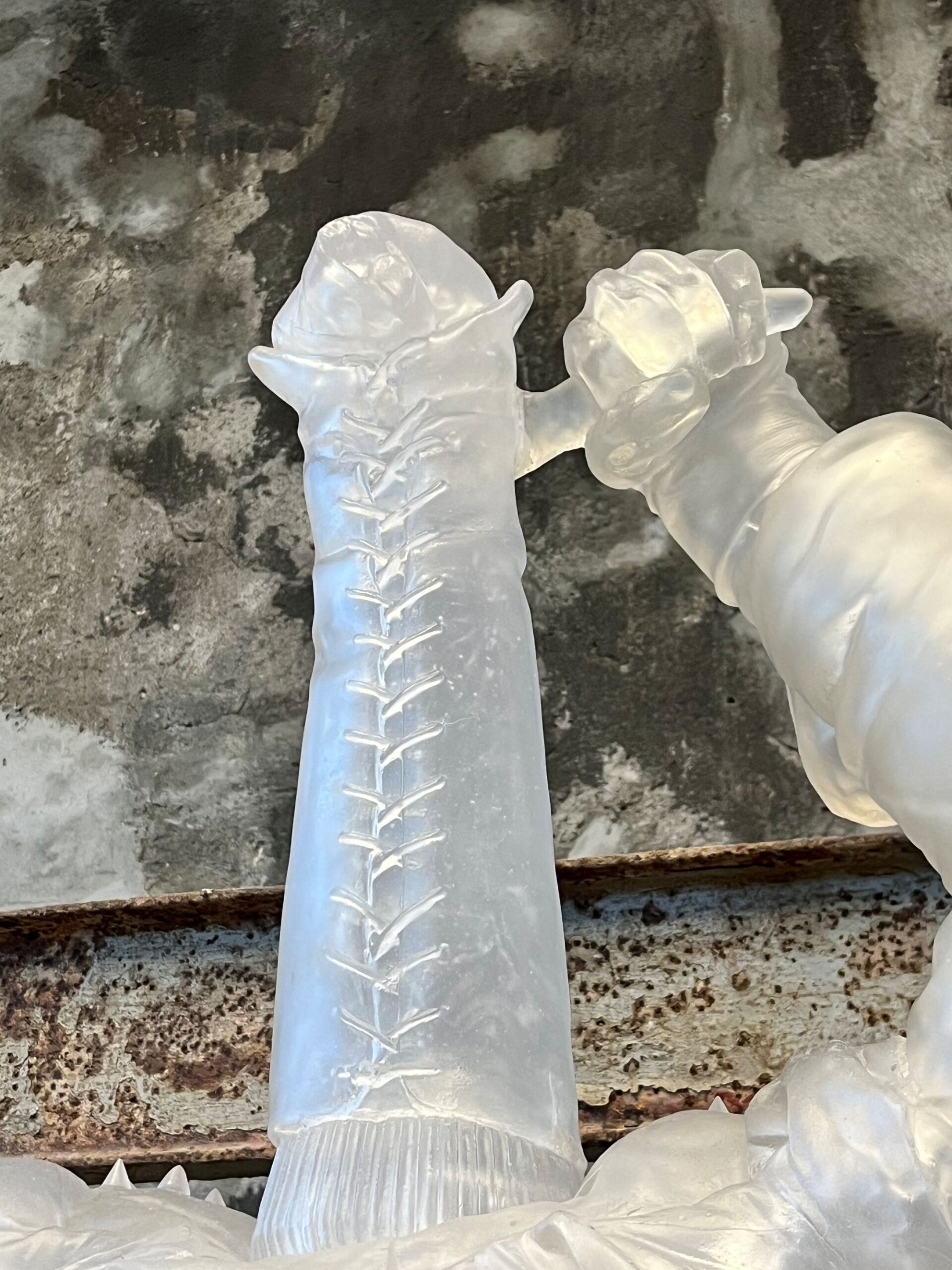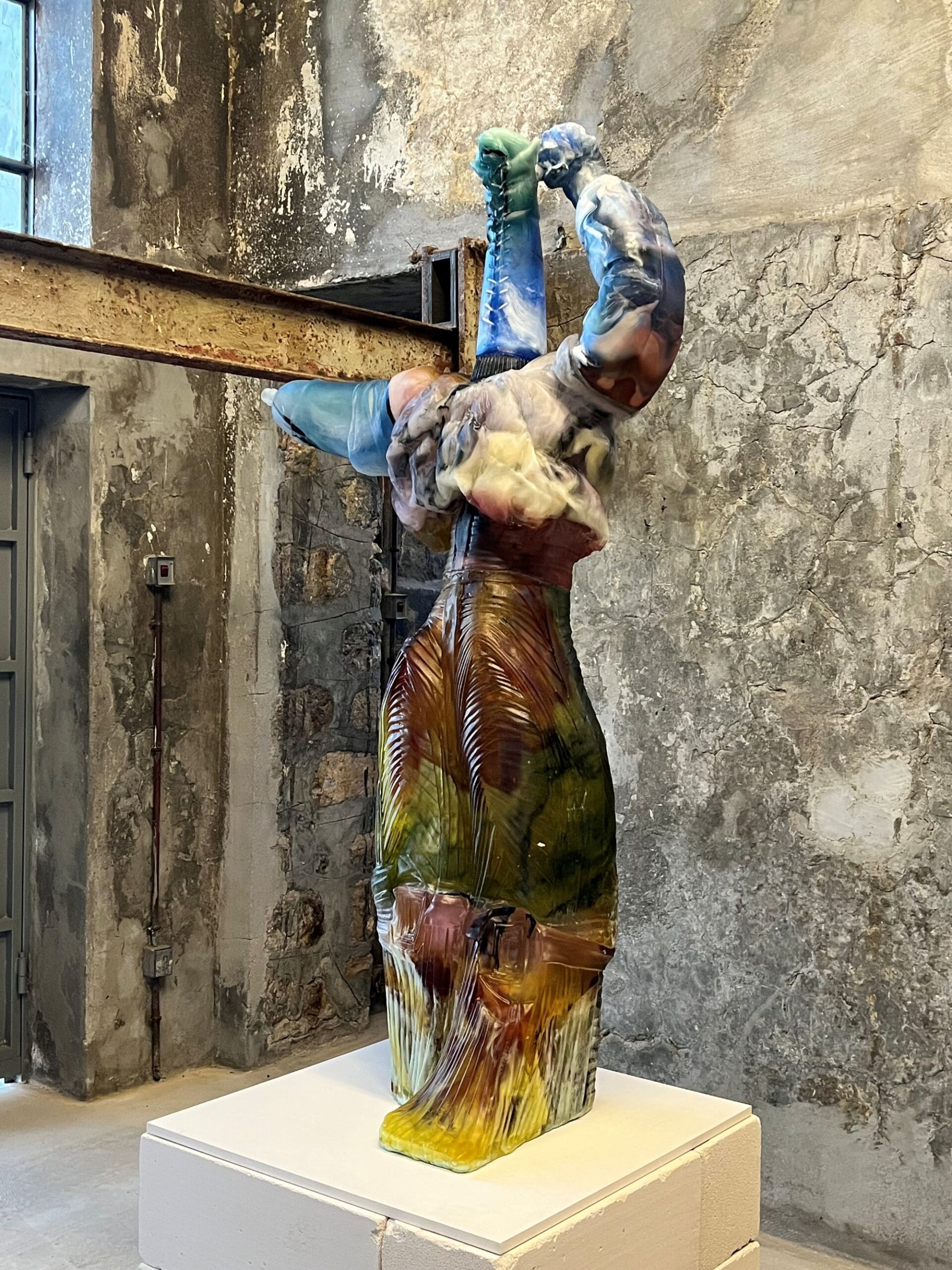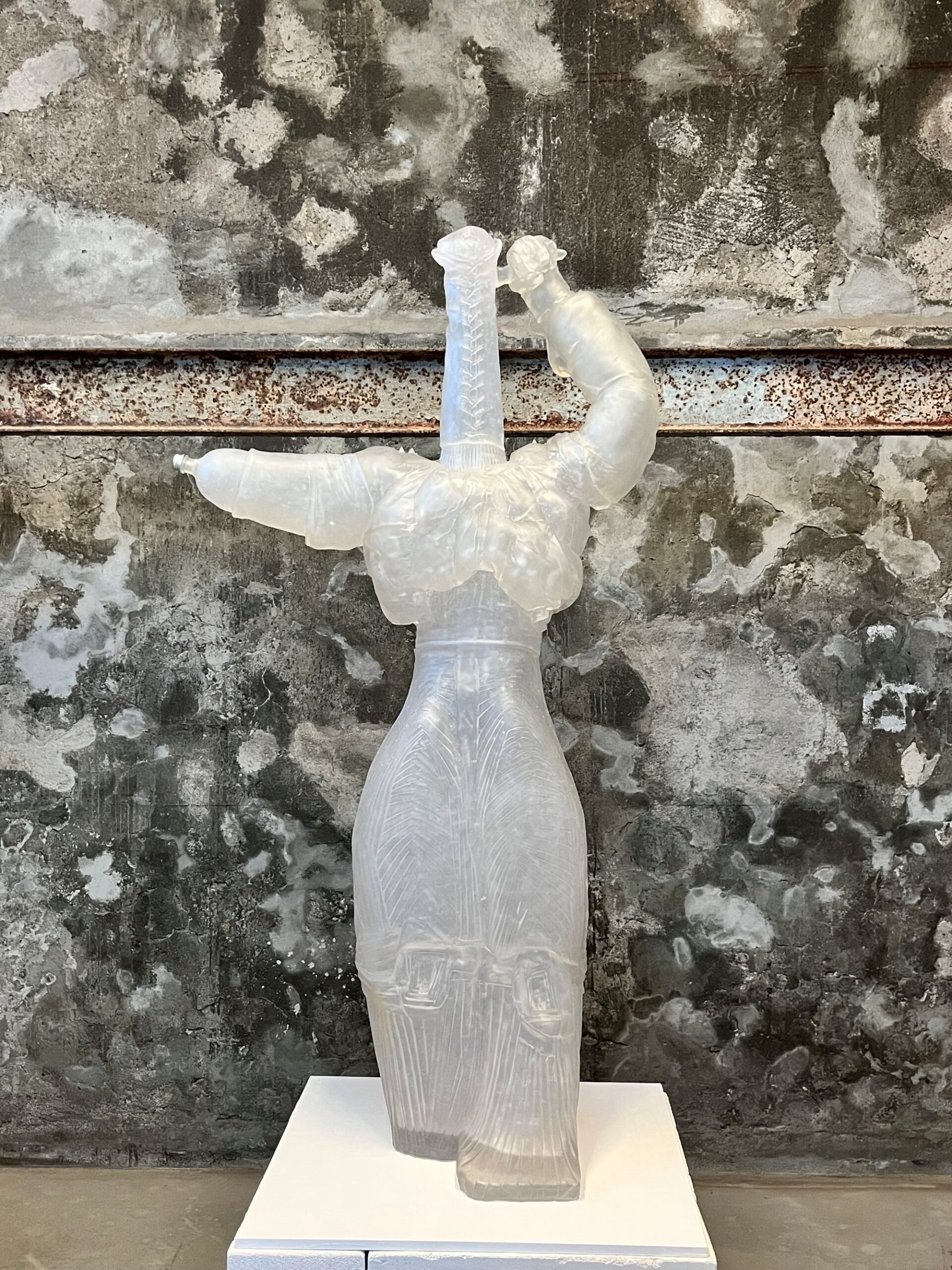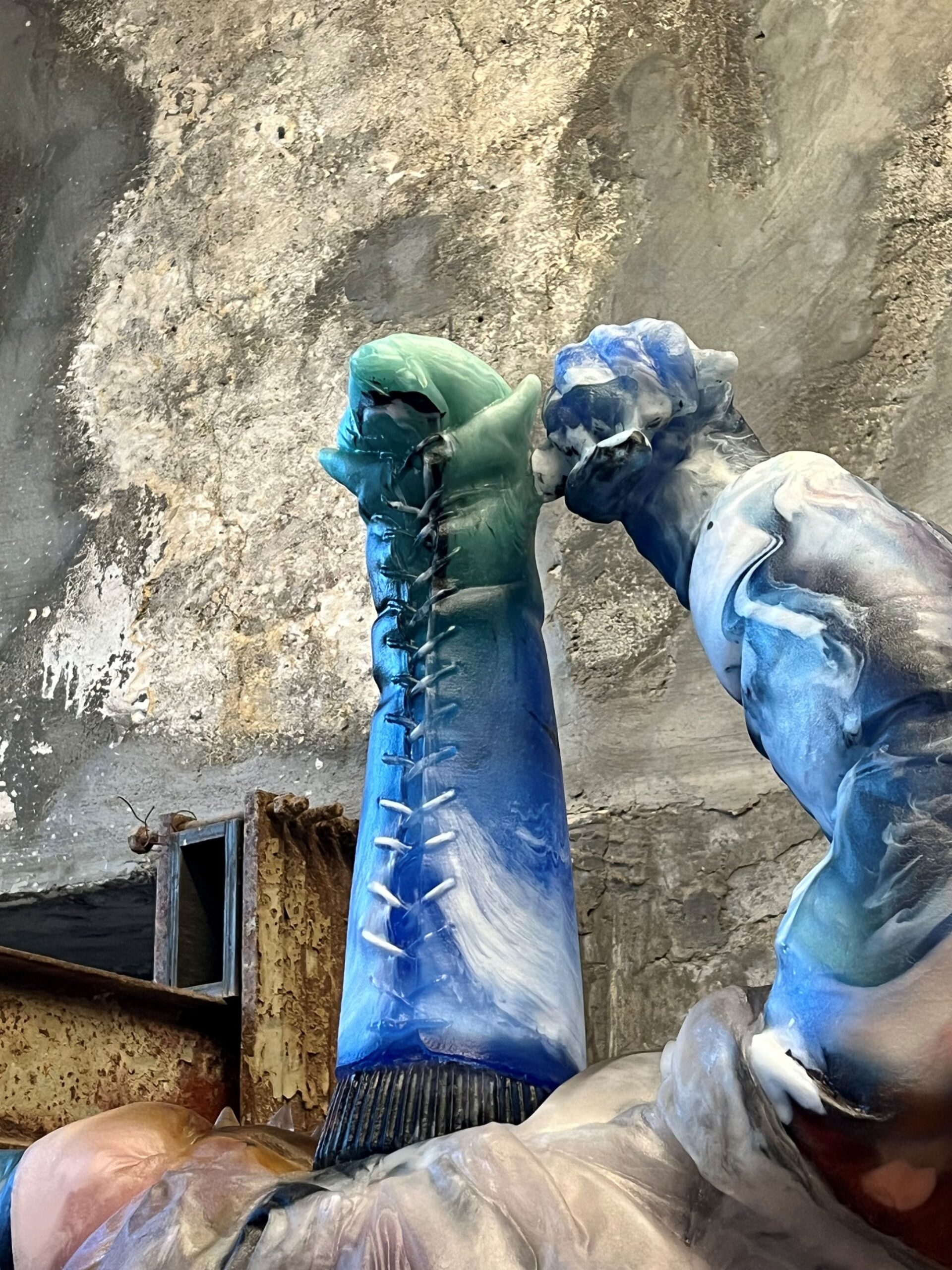By Yorgos Mouftoglou
The DESTE Foundation for Contemporary Art, founded in 1983 by collector Dakis Joannou, has long been a pivotal institution in the landscape of European contemporary art. Its Hydra Project Space, housed in the island’s former slaughterhouse since 2009, has become a distinctive site for annual summer exhibitions that highlight the intersection of contemporary artistic practice with historical memory and spatial politics. This year, the space hosted Romanian-born artist Andra Ursuța and her exhibition Apocalypse Now and Then (24 June – 31 October 2025), a powerful reflection on survival, material transformation, and the precariousness of bodies.
Ursuța’s installation is composed primarily of large-scale glass sculptures that present hybrid, distorted, and fragmented human forms. These ghostly figures, often marked by sutures and bodily dislocations, appear at once monumental and fragile; ancient and futuristic. According to the exhibition’s official description, Ursuța creates an environment of “[…] a defunct civilization whose relics seem to speak to the anxieties of our present” (DESTE Foundation, 2025). This vision, simultaneously apocalyptic and regenerative, foregrounds the interconnection between material vulnerability and cultural survival.
The choice of glass as a primary medium is both aesthetic and political. Glass is a material historically tied to fragility and transparency, yet it is also enduring, recyclable, and mutable. By reshaping glass through advanced casting processes and by incorporating fragments and recycled matter, Ursuța’s sculptures align with contemporary practices of upcycling, a process that reclaims discarded materials and transforms them into objects of renewed significance. This aspect situates the exhibition in dialogue with current debates on sustainability in the arts (and with the E-ART project itself), where material choices become acts of ecological as well as cultural resistance. One could say that in the reconstitution of broken vessels and fractured surfaces, Ursuța not only critiques the cycles of consumerist waste but also articulates a symbolic economy of endurance: survival through fragmentation, resilience through vulnerability.
This politics of materiality intersects meaningfully with queer theory, particularly in how Ursuța’s works figure the body as unstable, incomplete, and perpetually in transformation. As Judith Butler has famously argued, gender is not a stable identity but rather a performative effect of repeated practices and discourses (Butler, 1993). The bodies in Ursuța’s exhibition mirror this performativity: they are stitched, distorted, semi-transparent forms that never resolve into fixed wholes. Instead, they gesture toward becoming rather than being; bodies that are always in flux.
Further into this reading, Eve Kosofsky Sedgwick, in Epistemology of the Closet (1990), underscores the significance of ambiguity and in-betweenness as central to queer existence. Ursuța’s figures resonate with this insight: they are neither fully male nor female, neither entirely organic nor artificial. The very fact that these figures are marked by damage, repair, and incompleteness situates them within a queer politics of fragmentation, one that privileges survival through fluidity rather than permanence through stability.
In conclusion, Andra Ursuța’s Apocalypse Now and Then offers a powerful convergence of sustainability, material politics, and queer theory. Through her upcycled glass sculptures, Ursuța stages bodies that resist categorization, survive fragmentation, and embody resilience in vulnerability. Situated within the DESTE Foundation’s Hydra Project Space, the exhibition transforms the slaughterhouse into a site where brokenness is not erased but embraced, where beauty survives as scar and bruise, and where both material and human bodies are reimagined as fluid, precarious, and enduring.
References
- Bulter, J., Bodies That Matter: On the Discursive Limits of “Sex”. New York 1993.
- DESTE Foundation for Contemporary Art. Andra Ursuța: Apocalypse Now and Then. (Exhibition Text). Hydra, n.d. https://deste.gr/hydra/andra-ursuta/.
- Kosofsky Sedgwick, E., Epistemology of the Closet. Berkeley, 1990.

